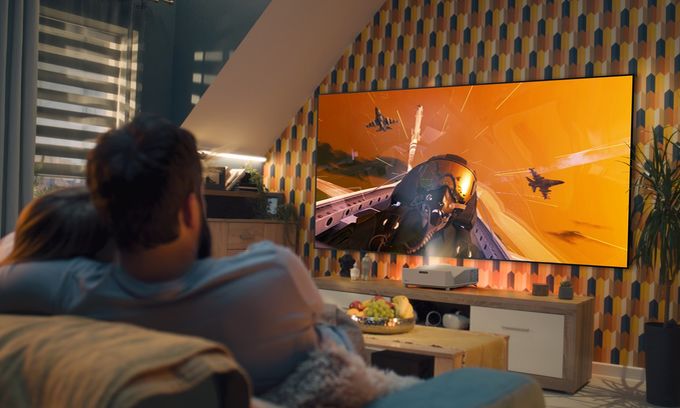This multinational company, headquartered in Hemel Hempstead, UK, was founded in 2002. For more than 20 years, Optoma has been among the industry leaders, successfully competing with Epson, BenQ, Hisense and other popular brands. The company also specializes in areas of large format displays, interactive flat panels, etc, but projectors are one of its main directions. Traditionally for leaders, Optoma offers a wide range of models, including ultra-short throw (UST) and mid-focal 1080p/4K projectors with lamp, LED and laser light sources.
Optoma projectors
This year company presented:
– Optoma UHZ55 (February 2024) – 4K mid-focal model (100″@3m) with ALPD 3.0-based (Advanced Laser Phosphor Display) Laser Phosphor light enhgine (3,000 ANSI Lumens accordance with IT7.228, color gamut ~ 100% of Rec.709, 85% coverage in DCI-P3, and just over 60% for BT.2020), launch price $ 2,500.
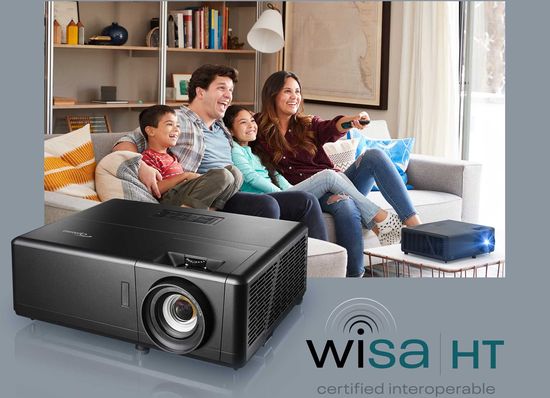
– Optoma GT3500HDR Full HD UST projector with Laser Phosphor light enhgine (3,000 ANSI Lumens accordance with IT7.228, Rec.709 color gamut).
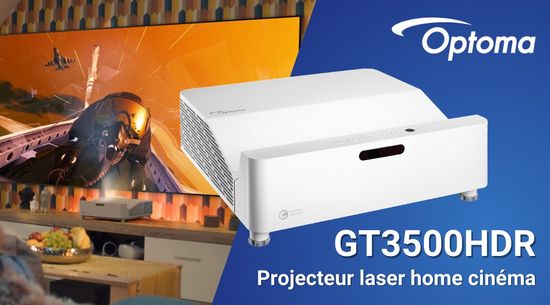
In fact, it’s a much brighter version of last year’s Optoma L1 4K UST. This first UST (105″@30cm) model with a 4LED light engine (2,500 LED Lumens or slightly whiter than 1,000 ANSI Lumens, color gamut ~ 100% Rec.709) and today costs ~ € 2,000.
New GT3500HDR can also be positioned as a budget ($ 1,500 vs $ 2,500) Full HD (1080p) UST version of the premium mid-focal UHZ55 4K. Of course, 4K resolution with a 0.47-inch DLP DMD (Digital Micromirror Device), which supports pixel shift-based XPR (Xpanded Pixel Resolution) technology from Texas Instruments is a significant bonus in favor of the UHZ55. But the price, higher brightness (3,800 ANSI Lm vs 3,000 ANSI Lm) and, especially, UST-design more than adequately compensate.
Formally, the GT3500HDR replaces the Optoma GT5600 (September 2018, 3,600 ANSI Lumens, 1080p, 220W UHP bulb, Throw Distance – 0.4 m – 0.6 m), which today costs ~$ 1,400. But it’s 28% more compact, uses Laser Phosphor light enhgine and has two HDMI 2.0 ports.
All models support Full HD 3D mode.
UST projectors and GT3500HDR specs
The ultra popularity of UST projectors is due to a completely objective reason. Unlike mid-focal models, they generate a huge image from 100″ and above from a distance of only a few inches. Accordingly, the UST projector is placed close to the wall without creating the problem of wires on the floor.

Owners of mid-focal models put up with the inconvenience or use a complex ceiling mount. As a result, UST models have become an optimal alternative to a traditional TV in the living room. To be fair, they are still inferior in terms of brightness and image contrast, but the huge size for the same price is sufficient compensation for many fans of the cinematic format.
Specs
– Dynamic Contrast 500,000:1;
– Brightness 3,800 ANSI Lumens;
– Full HD (1080p) resolution;
– Full HD 3D;
– ALPD 3.0 technology-based laser phosphor light engine;
– colour gamut – full coverage of Rec.709;
– (203 – 305 cm) / 80″-120″ Image Size from (0.4 – 0.7 m) Throw Distance at 0.25:1 Throw Ratio (100″@0,6m);
– internal speakers -15.0W mono;
– input lag – 8.6 ms at 1080p@120Hz and 17 мс at 4K@60Hz in built-in Enhanced Gaming Mode;
– geometric correction;
– HDR and HLG compatible;
– Colour Management System (CMS);
– 1.15x zoom;
– digital keystone – Horizontal & Vertical.
Four corner correction configures the projector keystone in vertical and horizontal plane.
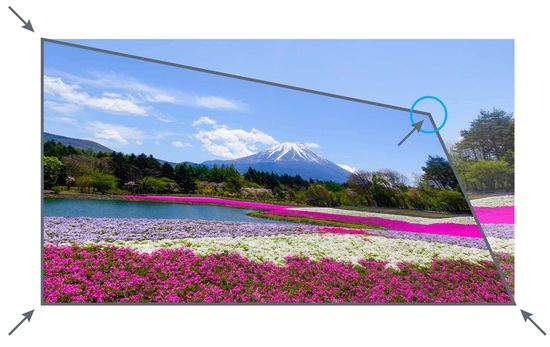
– 360-degree and portrait modes;
– Optoma’s DuraCore technology (advanced laser diode cooling techniques + improved dust-sealed optical engine).
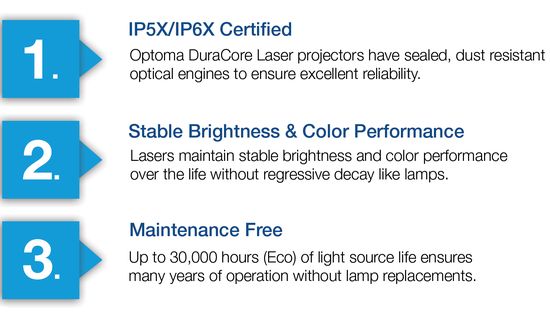
Projector resolution
The dependence of image quality on resolution has nuances for projectors. The huge image size is the main projector bonus. But viewing on a 100″ or more screen is comfortable from a distance of 3 meters or more.
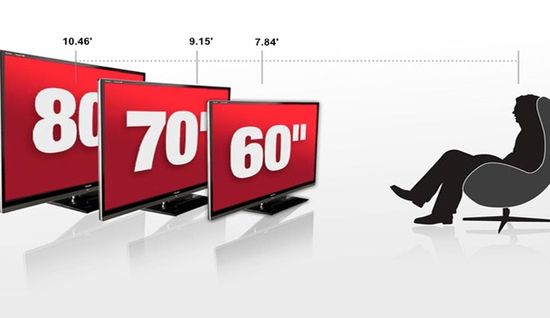
Otherwise, the viewer’s neck will quickly get tired of turning his head. In turn, the perception at a distance depends on the sharpness of vision. Probably, a sharp-eyed falcon or eagle will be able to assess the image clarity even at a significant distance. But a viewer with normal vision ceases to perceive the difference between Full HD and 4K from a distance of several meters due to limited sharpness of vision.
Several years ago, 8K TVs caused a similar discussion. Moreover, South Korean scientists even conducted studies. On the one hand, the subjects stopped identifying the resolution already from a distance of several meters, giving a random (50% to 50%) answer. However, they noted some differences. For example, 85% of subjects rated coffee in an 8K image of a steaming coffee cup as ‘hotter’ compared to a 4K image.
As a result, the researchers hypothesized the impact of resolution on immersiveness. As known, the immersive is a method of perception that creates the effect of immersion in an artificially created environment through hearing, vision, touch, etc.
Scientists have also suggested reduced fatigue when perceiving at higher resolutions due to the reduced need for the brain to interpolate missing pixels. However, this hypothesis was not strictly tested.
But in general, progress in the 8K TVs segment is not yet impressive. Perhaps this is due to a significant increase in price with a relatively small increase in image quality.
Optoma GT3500HDR vs Epson EpiqVision LS300/LS650 vs Formovie C3
GT3500HDR belongs to the budget segment of UST projectors. This list includes:
– Xiaomi Formovie C3 UST laser projector (Nov 2023 model) – 4K resolution with pixel shift, 2,250 ANSI Lumens (IT7.228 standard),
3,000:1 contrast (full on/off), ALPD 4.0-based RGB laser light engine (color gamut >106% for BT.2020), 8 point keystone correction, HDR10+ support, no 3D ~ $ 1,900;
– Epson EpiqVision Ultra LS300 Streaming Laser Projector (Nov 2020 model) – Full HD (1080p) resolution, 3,600 ISO Lumens (ISO 21118 standard, 1 ANSI lumen ~0.8 ISO Lumens, 3,600 ISO Lumens ~ 2,900 ANSI lumen), Laser Phosphor light engine, 3LCD display, built-in Android TV, no 3D ~ $ 2,000;
– Epson EpiqVision Ultra LS650 Streaming Laser Projector (Nov 2023 model) – 4K resolution with pixel shift, 3,600 ISO Lumens (ISO 21118 standard, 1 ANSI lumen ~0.8 ISO Lumens, 3,600 ISO Lumens ~ 2,900 ANSI lumen), Laser Phosphor light engine, 3LCD display, built-in Android TV, no 3D ~ $ 2,250.
With the exception of the dynamic contrast ratio (1,500,000:1 vs 2,500,000 for LS650), resolution (Full HD vs 4K) and price (~ $ 2,000 vs $ 2,250), the LS300 and LS650 are identical.
To be fair, the brightness of 3LCD technology-based Epson models with is significantly different from the brightness of DLP projectors. This is due to the absence of losses on the color wheel, which in DLP models works like a filter, allowing only one color to pass through at any given time. As a result, 3LCD projectors always have an equally White and Color Light Output (CLO), providing more bright and vivid colors vs other technologies.
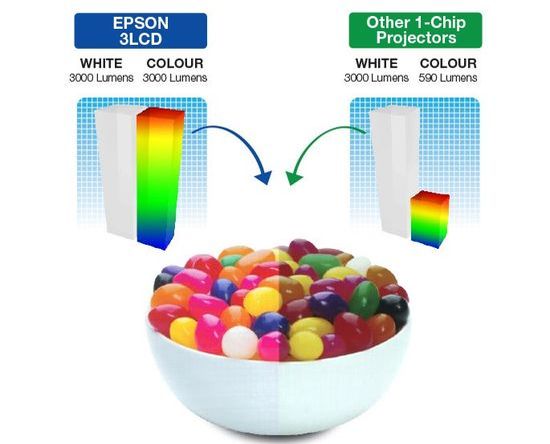
Conclusion
In fact, the Optoma GT3500HDR is the cheapest UST laser projector available today. The lack of support for XPR (Xpanded Pixel Resolution) technology can be positioned as one of its main cons.
As known, it provides playback of 4K content using 2- or 4-phase pixel shift and works as follows. The projector receives 8 million pixels of 4K images, divides them into 4 equal parts (4-phase pixel shift), and consistently reproduces them with a half-pixel shift diagonally using 2 million micromirrors of a relatively cheap 1080p chipset.
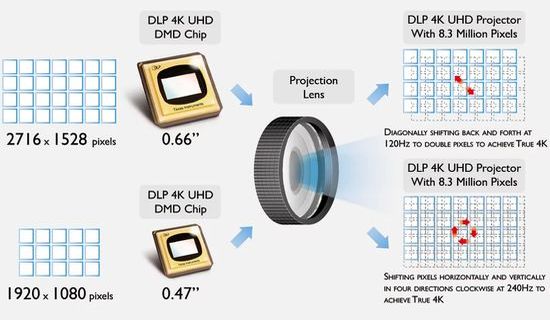
Of course, the projector only produces a 1080p image at any given time. But due to the high frequency, the brain ignores the microdelays, perceiving the pictures as a single image with a higher resolution. Pixel shift is carried out by deflecting the lens using 4 electromagnets of the XPR module.
But their prices today start at $ 2,000. Perhaps the elimination of its use has reduced the price of the Optoma GT3500HDR to $ 1,500.
In addition, the dependence of perceived image quality on resolution is directly related to viewing distance. It almost always exceeds several meters due to the huge projector image of 100″ or more.
Given our limited visual acuity, the difference between Full HD and 4K from such a distance practically disappears. Therefore, 25-30% difference in price is a significant bonus.
Sure, the $ 1,900 Formovie C3 4K is a dangerous competitor, but it’s significantly inferior in brightness. Bright Epson models are also great, but they are more expensive. Therefore, the Optoma GT3500HDR has quite bright marketing prospects due to its superb price-quality ratio.
This video showes Optoma DuraCore laser technology.
